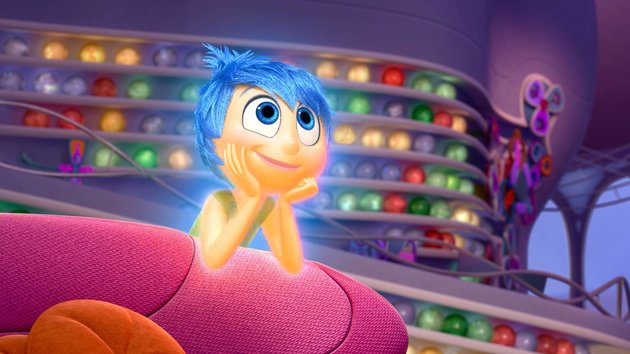
The functions responsible for Happiness, Sadness, Fear, Anger and Disgust are characterized and the details of the activities they do to run the life of a young girl Riley right from her birth is what drives the story. Joy and Sadness need to find her memories and return them to Headquarters before it's too late.Īll of us have various brain functions that govern our response to various situations. But, an accident involving Riley's happy memories changes her entire outlook.
INSIDE OUT THE MOVIE JOY WALLSTICKER HOW TO
Each helps her make decisions in the specific moments they are triggered, and each contributes to the overall collaborative personality that makes her who she is.When a young girl named Riley is uprooted from her Midwestern lifestyle and moves to the busy and chaotic San Francisco, her emotions Anger, Sadness, Disgust, Fear, and (her most important emotion) Joy, start to disagree on how to deal with this dramatic change, which causes problems up in Headquarters, the central living and working place for the five emotions. During her hockey game, she flutters between fear, anger, joy, and sadness all at once. As we see in the final scenes of Inside Out, Riley is forced to experience and comprehend numerous emotions at the same time. Joy comes to the conclusion that Riley will be better off knowing the emotional polarities of life. They may need help knowing how to do it because there was a breakdown of basic needs somehow but inside are the resources for growth. The task is to get the person to believe in themselves again. Then when reflected on, the events are not re-lived, they are all seen more objectively which changes them with the change in perspective. It makes the person feel connected and grounded back in reality. A witness is generally required for this to debrief the lost soul. Denial of sadness only leads to a life of fear and anxiety wherein a person fails to believe they have the ability to cope with grief, which is damaging to the personality as a whole.Īs psychotherapist Mike Leary wrote on Quora, “Most therapies are designed to access those memories and have the person acknowledge the truth of the experience, freeing the trapped energy.


Repressing negative memories or pretending sadness doesn’t exist causes damage to core memories. Inside Out suggests what most psychotherapists preach: the most important and all-encompassing element of emotional control is truth. Riley will be able to appreciate joy more fully if she experiences tinges of sadness. In the end, Joy allows Sadness to touch all Riley’s core emotions and give them the complexity she now understands is crucial to overall emotional understanding. Sadness simply exists to emphasize joy, and Joy realizes she shouldn’t be fighting Sadness but embracing her role. Every emotion needs the others to help give it context and poignancy. Joy sees it as an epiphany-Sadness doesn’t exist to bring Riley down on purpose, but to serve as a warning that something is troubling her. It’s here she stumbles across a forgotten memory which started sad but turned happy. Her hopeless situation is at its bleakest point, and she is at risk of never being able to return to central command and returning joy back to Riley’s life. Joy’s blue hair is symbolic of this connective tissue.Īt the turning point of the film, Joy winds up stranded in Riley’s memory dump. Without some sort of contrast, happiness can’t be appreciated. What Joy learns throughout the course of the film is that nobody can be happy all the time.

When the two characters end up displaced from Riley’s central command and are stuck wandering around the various components of her personality and memory banks, Joy actively keeps Sadness from touching any of Riley’s stored memories and tainting them with her depressing blue aura. She even draws a circle on the floor at one point, commanding Sadness to stay within its lines. We learn that while Joy occasionally can’t help but let Fear (Bill Hader), Disgust (Mindy Kaling) or Anger (Lewis Black) take over on occasion, she does everything in her power to keep Sadness (Phyllis Smith) off Riley’s radar.

The film takes us on a journey as we witness the various emotions in Riley’s head respond to the events of her life, with Joy typically at the forefront, doing her best to ensure all of Riley’s experiences are happy ones that build long-lasting positive memories. That Joy (Amy Poehler), as it turns out, has been the dominant emotion within the control center of her brain. Inside Out (2015) is the story of Riley (Kaitlyn Dias), a super happy girl whose first eleven years of life were ripe with fun, laughter, and joy.


 0 kommentar(er)
0 kommentar(er)
